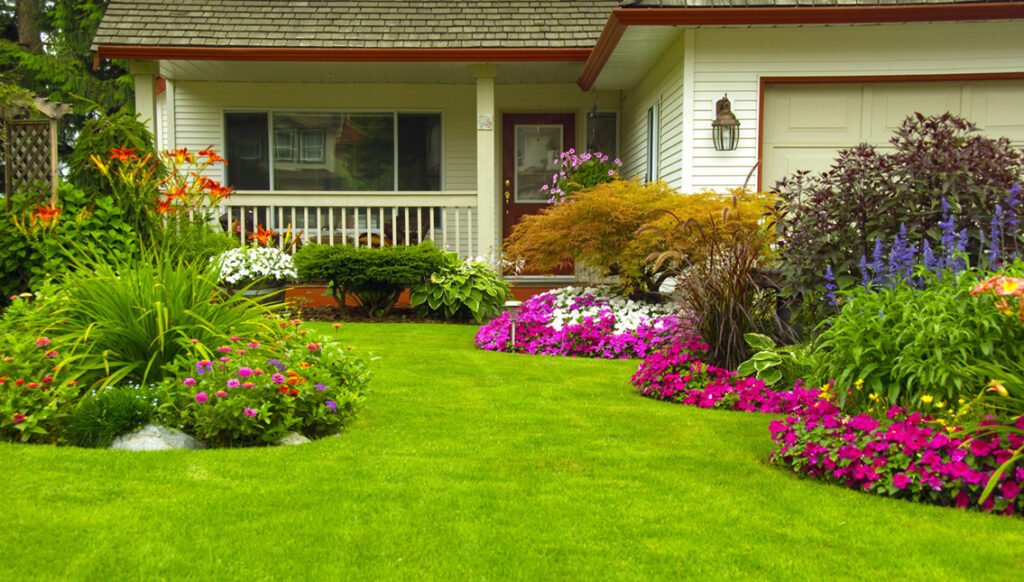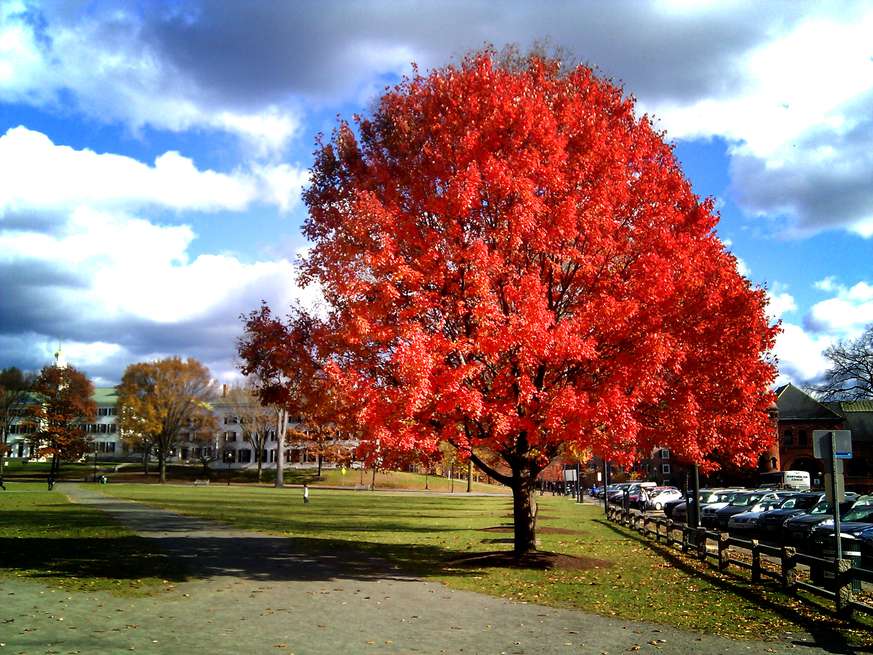Small yards can present a unique challenge when it comes to selecting the right trees for your landscape. You want to enjoy the beauty and benefits of shade trees, but space is often limited. Fortunately, there are many excellent shade trees that thrive in compact spaces and provide the much-needed relief from the sun’s heat. In this guide, we’ll walk you through the best shade trees to plant in small yards, offering cooling shade and beautiful foliage without overwhelming your limited space.


What Is Core Aeration?
Core aeration involves using a machine to remove small plugs of soil from your lawn. These plugs are typically about 2 to 4 inches long and help alleviate soil compaction. Compacted soil restricts the flow of water, air, and nutrients to your grass roots, which can make it harder for your lawn to thrive. Core aeration creates small holes in the soil, allowing for better air circulation, improved root growth, and enhanced nutrient absorption.
Why Choose Shade Trees for Small Yards?
Shade trees are essential for several reasons. They offer shelter and coolness, lower energy costs by reducing heat in your home, improve air quality, and enhance the aesthetic value of your outdoor space. But when dealing with a small yard, the key is finding the right tree that will not grow too large, yet still provide ample shade.
When selecting a tree for a small yard, look for species that are compact, grow slowly, and have a manageable root system. Also, consider the tree’s growth habit, including its height, spread, and overall structure.
The Japanese Maple is a perfect choice for small yards, thanks to its compact size and stunning beauty. This tree can grow between 10 and 15 feet tall, making it an ideal option for limited spaces. Known for its vibrant foliage, the Japanese Maple’s leaves turn red, orange, or yellow in the fall, creating a breathtaking display.
This tree thrives in partial shade and requires minimal maintenance, making it an excellent addition to any small yard. It works particularly well as a specimen tree or in smaller garden designs. The Japanese Maple also has a graceful, rounded canopy that provides just the right amount of shade without becoming too overpowering.
Key Features:
Height: 10-15 feet
Spread: 8-12 feet
Best for: Partial to full shade, small to medium gardens
Crape Myrtle is a small to medium-sized tree known for its vibrant flowers and beautiful bark. This tree typically grows 15 to 25 feet in height and offers stunning summer blooms in shades of pink, red, white, or purple. Its unique bark, which peels away to reveal smooth, exfoliating surfaces, adds ornamental value even during the colder months.
Crape Myrtle is an excellent option for small yards because of its moderate size and upright growth habit. Its flowers attract pollinators like bees and butterflies, further enhancing your garden’s ecosystem.
Key Features:
Height: 15-25 feet
Spread: 10-15 feet
Best for: Full sun, small spaces, and ornamental value
The Serviceberry, also known as Juneberry, is a small tree that grows between 15 and 25 feet tall, making it perfect for small yards. Its early spring flowers are a welcome sight, followed by berries that ripen in the summer, attracting birds and other wildlife. In the fall, the Serviceberry’s foliage turns shades of orange and red, adding vibrant color to your garden.
This tree is adaptable to a variety of soil types and can tolerate both sun and partial shade. Its dense canopy provides excellent shade for your yard, while its relatively small size ensures it doesn’t overwhelm the space.
Key Features:
Height: 15-25 feet
Spread: 10-15 feet
Best for: Sun to partial shade, bird-friendly gardens
The Redbud is another fantastic tree for small yards, offering early spring blooms that brighten up any space. With a height of 20-30 feet and a spread of 25 feet, the Redbud can fit into smaller landscapes without taking over. Its striking pink or purple flowers appear before the leaves, making a stunning early-season display.
The Redbud’s heart-shaped leaves and attractive bark make it a year-round focal point. While it prefers full sun to partial shade, it is adaptable to a variety of soil conditions, making it a versatile choice for small yards in various climates.
Key Features:
Height: 20-30 feet
Spread: 25 feet
Best for: Full sun to partial shade, seasonal beauty
For an evergreen option, the Dwarf Ficus is a great choice. This tree has a moderate growth rate and a compact size, typically growing 8-10 feet tall and 6-8 feet wide. It’s perfect for smaller yards or patios where year-round greenery is desired. The Ficus tree’s glossy, dark green leaves create a dense canopy of shade, offering a cool retreat during the warmer months.
This tree is well-suited for regions with mild winters and can thrive in containers or as a specimen tree in smaller gardens. Though it prefers full sun, it can also tolerate some partial shade.
Key Features:
Height: 8-10 feet
Spread: 6-8 feet
Best for: Full sun, small spaces, and evergreen appeal
The Small-Leaf Linden is a deciduous tree that typically grows between 30 and 40 feet but remains narrow, making it an excellent option for tight spaces. This tree produces fragrant yellow flowers in the summer, attracting bees and other pollinators. Its heart-shaped leaves provide dense shade, making it perfect for hot afternoons in small yards.
Though a bit taller, the Small-Leaf Linden’s columnar shape ensures it doesn’t spread too much, allowing you to enjoy the benefits of a shade tree without taking up too much space.
Key Features:
Height: 30-40 feet
Spread: 15-20 feet
Best for: Full sun, attracting pollinators
Tips for Planting Shade Trees in Small Yards
When planting shade trees in small yards, it’s essential to:
Choose compact varieties: Opt for trees that grow to a manageable size.
Consider soil conditions: Choose trees that thrive in your local soil type.
Allow space for root growth: Even small trees need room to establish healthy root systems.
Prune regularly: Proper pruning will help maintain the tree’s shape and size.
Conclusion
With the right shade tree, even a small yard can become a peaceful, cool retreat. Trees like the Japanese Maple, Crape Myrtle, and Serviceberry provide all the benefits of shade and beauty, while taking up minimal space. By selecting the appropriate species and caring for them properly, you can enjoy the many advantages of shade trees in your small outdoor space.
Whether you’re looking to create a cozy corner of shade or a vibrant focal point, these trees offer a variety of options to fit every small yard’s needs. So, choose wisely and transform your compact space into a serene, shady oasis.



